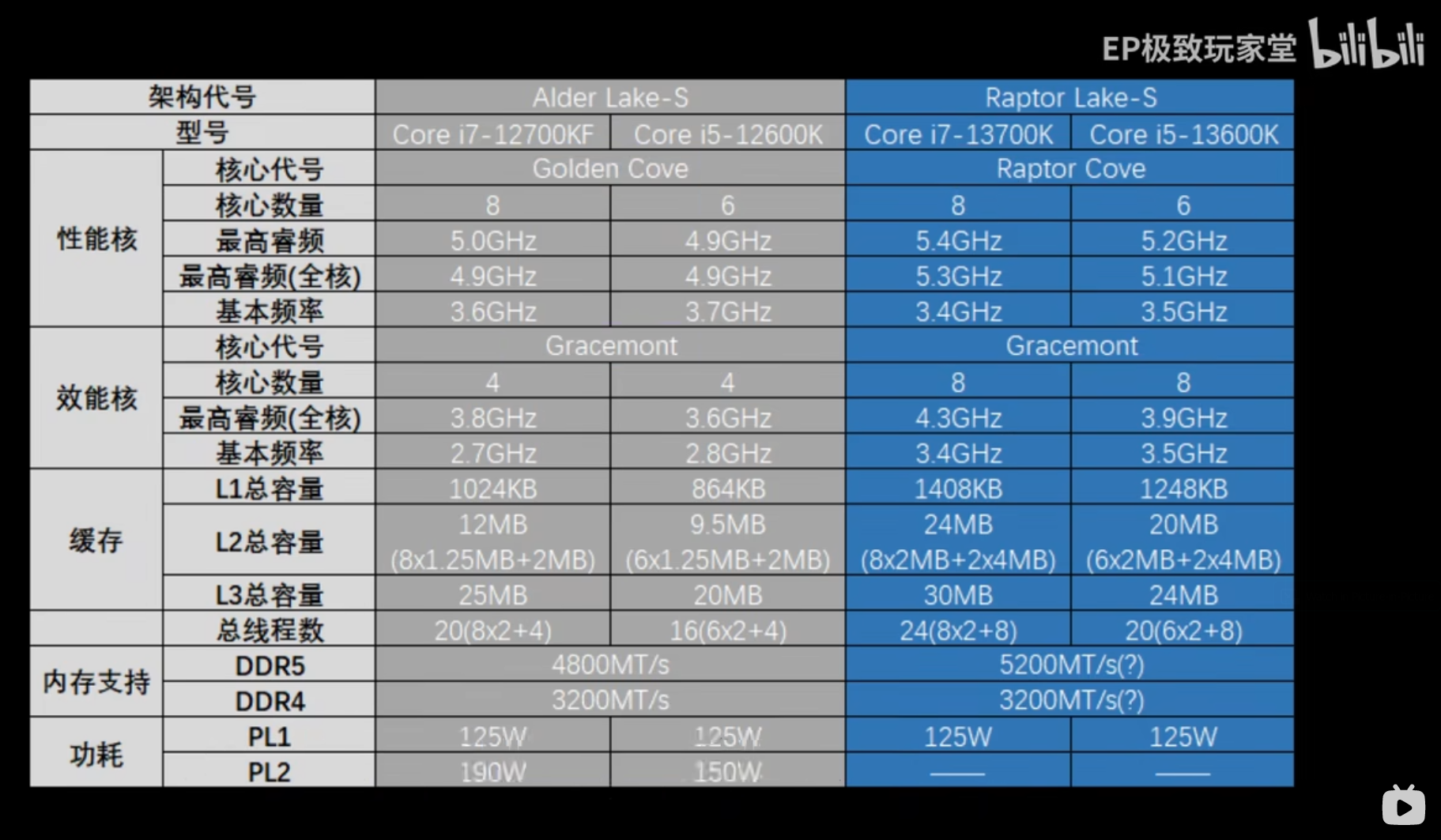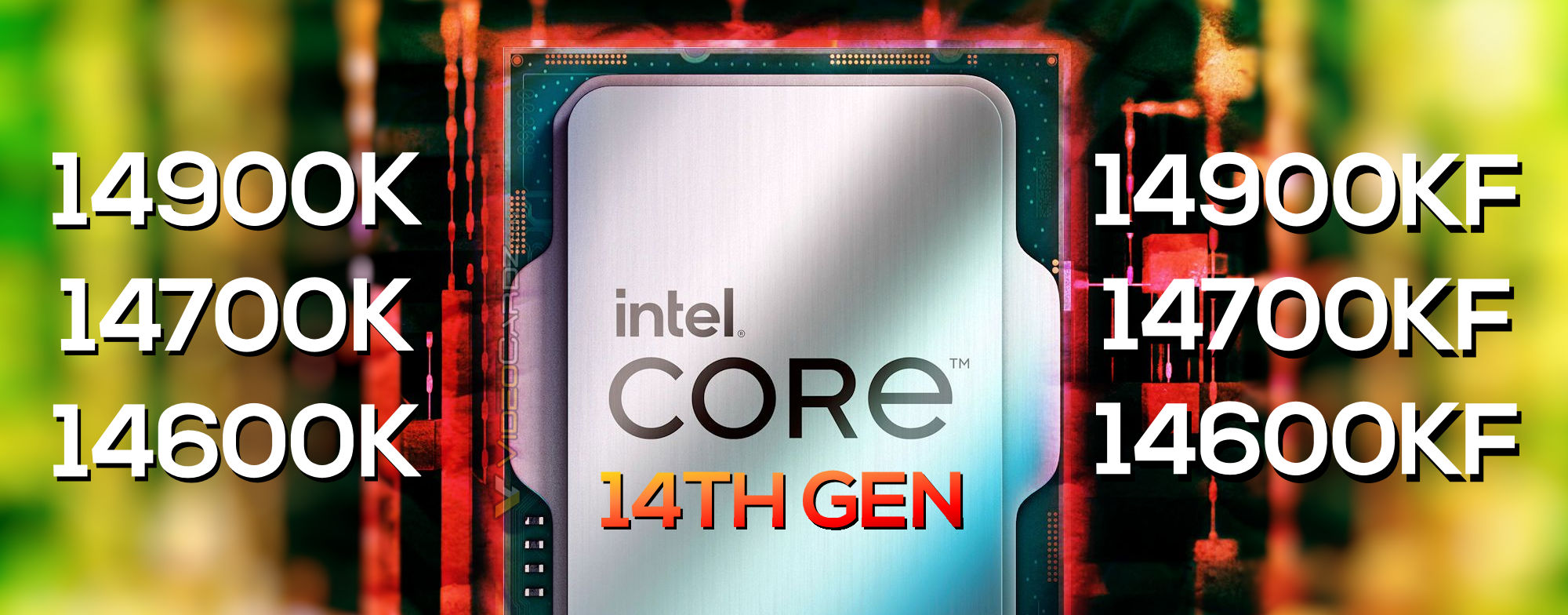Intel Core i5-14600K is the latest Intel processor released as part of the 14th generation lineup. We’ve already reviewed the top-of-the-line Core i9-14900K, but today we’re looking at one of the best midrange CPUs available today: the 14th Gen Intel Core i5-14600K. We’re directly comparing the i5-14600K and i7-13700KF from the 13th generation lineup, which are also viable options at this point. Let’s take a look at the i5-14600K benchmarks. 
Specification comparison between i5-14600K and i7-13700KF
Intel Core 13th and 14th generation processors boast a hybrid performance architecture consisting of E cores for efficiency and P cores for performance. Check out the spec comparison between the two processors here. CPU specs i5-14600K i7-13700KF Total number of cores 14 cores (6P cores + 8E cores) 16 cores (8P cores + 8E cores) Total number of threads 20 threads 24 threads Turbo Boost Max Technology 3.0 Frequency Not applicable (not supported) 5.40GHz maximum turbo frequency 5.30GHz 5.30GHz TDP (max) 181W 253W TDP (base) 125W 125W 
Benchmarking i5-14600K and i7-13700KF
Before reviewing the benchmark results, I have listed the components of the test bench here.
- CPU 1: 14th generation Intel Core i5-14600K
- CPU 2 : 13th Generation Intel Core i7-13700KF
- CPU Cooler : Lian Li Galahad 360 AIO ARGB CPU Liquid Cooler
- Motherboard: ASUS ROG STRIX B760-I Gaming WiFi
- RAM: 32GB (16GB x 2) HyperX FURY DDR5 5200MHz
- GPU : ROG STRIX RTX 3070 Ti Gaming OC Edition
- SSD: 1TB Samsung 860 QVO
- PSU: 1000W Deepcool PQ1000M 80 Plus Gold Power Supply
- Case: Cooler Master MasterFrame 700 Full Tower Case
- Thermal Compound: Thermalright TF-7 Note : For these benchmark comparison scores, consider the i7-13700K to be on par with the i7-13700KF. The only difference between the two Core i7 CPUs is that the i7-13700K includes Intel integrated graphics, which the i7-13700KF does not have.
Cine bench R23
Comparing the 14th Gen Core i5 and the 13th Gen Core i7 on the Cinebench R23 multi-core benchmark, we see that the Core i7 outperforms . The i7-13700KF wins here with a score of 30,015 points , and relevant workloads that utilize multiple threads will benefit more from the i7 than from the i5. However, the i5-14600K’s score isn’t bad at all.
A score of 22,955 points is on par with the 12th Gen i7-12700K processor, and is actually slightly better. Additionally, if you can take advantage of the K-series chips and adjust the i5-14600K’s voltage, CPU frequency, and power limits (on a compatible motherboard), you can score over 24,000 points on the i5-14600K.
Check out the performance with the Cinebench R23 single-core benchmark. Here both the i5-14600K and i7-13700KF are touching each other. The i5-14600K’s lead is negligible at 2029 points, while the i7-13700KF reaches 2,0006 points. Basically, when it comes to single-core performance, both can be said to be high-performance CPUs. There is no big difference between them.
geek bench 6
The Geekbench 6 multi-core test shows that the i7-13700KF outperforms the i5 with 17,708 points . This can be achieved by increasing the number of cores and threads. Still, the i5-14600K is not far behind the i7-13700KF, scoring 16,344 points .
When it comes to Geekbench 6 single-core scores for these CPUs, both are essentially the same. The i7-13700KF has a score of 2,782 points and the i5-14600K has a score of 2,758 points. As with Cinebench, we don’t see much of a difference here.
PCMark 10 extension
PCMark 10 is a great software for testing the responsiveness and overall performance of your system in various scenarios. This includes daily tasks, content creation, and tests on graphics and physics. We used the same GPU here, so the scores can be compared evenly. In the PCMark 10 benchmark, the i7-13700KF leads with 12,156 points .
In this test, the Core i5-14600K scores 11,285 points , which shows that it’s not far behind. Both of these CPUs offer great performance for everyday tasks. The PCMark 10 Extended benchmark shows that both CPUs show no signs of slowing down in any of the workloads tested. These scores are well within the range of high-performance PCs.
Content Creation Blender Benchmark
The Blender CPU benchmark test puts the processor through its paces in three different Blender rendering scenarios: Monster, Junkshop, and Classroom. Considering the i7-13700KF’s high core and thread count ( 16 cores, 24 threads ), you’ll find it great for content creation . If you need a high-performance CPU for professional use cases, getting a faster Core i7 processor can provide direct benefits and save time when rendering.
However, even if you’re on a tight budget, the 14th Gen Core i5-14600K is a relatively good CPU for content creation. Comparing the above scores (measured in samples rendered per minute), the i5-14600K is approximately 25-30% slower on this Blender CPU benchmark compared to the 13th Gen i7-13700KF. 
Gaming performance of i5-14600K and i7-13700KF
The gaming performance comparison results below show that both the 14th Gen Core i5-14600K and the 13th Gen Core i7-13700KF are better at gaming. Unless you regularly play CPU-heavy games with simulation-heavy workloads (like Total War or Cities Skylines 2), the i5 and i7 are basically equivalent when it comes to gaming performance.
cyberpunk 2077
You can see that both the i5-14600K and i7-13700KF perform very well in Cyberpunk 2077. The minimum FPS was slightly higher at 49.52 on the i5 compared to 37.92, but this boils down to the margin of error . If you see a slight difference in any of these benchmarks.
In this game, both processors can output an average of 79FPS at maximum settings (no RT). Please note that Cyberpunk 2077 2.0 is more intensive compared to the original game, so benchmarks for the previous game cannot be directly compared.
red dead redemption 2
Red Dead Redemption 2 once again produced very similar results from both processors. The i7-13700KF averaged 90FPS , while the i5-14600K had 92FPS. The gaming experience was smooth on both CPUs.
counter strike 2
In Counter-Strike 2, we tested the i5-14600K and i7-13700KF on the “de_dust2” map during a deathmatch. Both processors offer great performance at both low and high settings. The Core i5-14600K achieves 290 FPS on low settings, while the Core i7-13700KF achieves 305 FPS. The slight performance increase can be attributed to the i7 (5.40GHz) having a higher TVB 3.0 boost clock than the i5 (5.30GHz).
As long as you have a relatively modest GPU (I used an RTX 3070 Ti), cranking up the settings for this game doesn’t seem to hinder performance much. At high settings, the i5-14600K got an average of 276 FPS and the i7-13700KF got 291 FPS. By the way, check out the best CS2 settings for maximum performance and great visibility. Play CS2 at optimal 250+ FPS on both 13th Gen Intel Core i7 and 14th Gen Intel Core i5 CPUs.
apex legends
Apex Legends still has a 300 FPS cap, even though I removed the limit in the launch option (+fps_max unlimited). So our tests show that both processors are able to maintain as close to 300FPS as possible. The results were impressive, with an average of 286FPS on the i5-14600K. The i7-13700KF averaged 290FPS.
However, when it comes to minimum FPS, you will find that during intense battles or when descending into crowded areas, you will need an FPS tank. Still, the i5-14600K maintained performance of over 207 FPS, and the i7-13700KF also maintained it at 215 FPS. Using higher settings will result in performance in the mid-200s for both CPUs. In either case, it’s possible to play Apex Legends at a stable 200+FPS on both i5 and i7 processors.
Power consumption and temperature test
We ran both of these CPUs through Cinebench R23’s 10-minute throttle test. In the power consumption test of the 14th generation Core i5-14600K, the maximum power consumption was 195W . This i5-14600K has a TDP of 181W, so we’re only slightly over the limit here. As for the 13th generation i7-13700KF, the power consumption reached up to 262W . The Core i7 processor has a 253W TDP. Intel has introduced multiple Turbo Boost technologies that could allow the chip to slightly exceed power consumption based on available thermal headroom.
These power limits can be customized in the Windows 11 BIOS. There are also features like Intel Adaptive Boost and Intel Thermal Velocity Boost that you can turn on or off depending on your preference. In addition, voltage and CPU frequency optimizations allow you to exceed the power limits of K-series CPUs (overclock) and adjust them for efficiency.
Tuning for K-series CPUs is based entirely on your motherboard and CPU cooler, as well as your overclocking skills. Personally, I was able to tune the i5-14600K to maximum efficiency (-0.1V undervoltage) and scored 23,000 points on Cinebench R23 multicore at just 140W .
As for temperatures, the i5-14600K reached 80 degrees Celsius and the i7-13700KF 88 degrees Celsius, as it was cooled by the Lian Li Galahad 360 with a turbo profile. If you choose a CPU cooler that can effectively cool a TDP of 250W, you can use a CPU like the i7-13700KF (or i7-13700K) on your PC without worrying. However, if your CPU cooling is limited to less than 200W, choose the i5-14600K instead. 




![How to set up a Raspberry Pi web server in 2021 [Guide]](https://i0.wp.com/pcmanabu.com/wp-content/uploads/2019/10/web-server-02-309x198.png?w=1200&resize=1200,0&ssl=1)












































